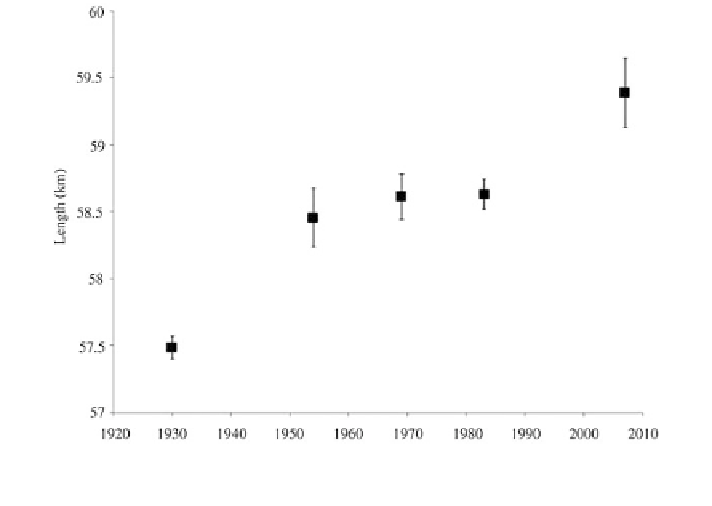Environmental Engineering Reference
In-Depth Information
Fig. 16.20 Change in the mean (±standard deviation) total channel length from 1954 to 2007
measured along the centerline for the length of the upper Kromme River
change because the Kromme River was originally a valley-bottom wetland with no
channel visible at the surface. That the Kromme River channel length is decreasing
over time is likely to be a result of alien invasion and concomitant wetland
destruction.
What has happened in the Kromme may be a reasonable reflection of what is
happening in other South African catchments (Mander et al.
2010
). This damage to
natural capital in catchments that are valuable for water provision is counter-
intuitive. In the case of the Kromme, farming is marginal and it is not an important
agricultural catchment (Haigh et al.
2002
). In such cases we would recommend
prioritizing land-use at a catchment scale in terms of which ecosystem goods or
services it is to provide. It is clear that high quality water-related ecosystem goods
and services are not compatible with intensive agriculture in the floodplains of the
same catchment. Yet this is the model that South Africa appears to follow.
In the face of climate change, water resources in South Africa are likely to
become scarcer and less predictable over time (World Water Assessment Program
2009
; Matthews et al.
2011
). Specific predictions include an increase in summer
rainfall, a decrease in winter rainfall, an increase in rainfall intensity in the east, a
monthly rainfall change of 10 mm or more, and an increase in air temperature
(mainly minimum temperature) by up to 2-3 C (Midgley et al.
2005
). Further-
more, climate change is likely to result in an increase in floods and drought
(Midgley et al.
2005
). In the Kromme, rainfall is decreasing over time while major
floods appear to be increasing. These predictions indicate a likely increase in
extreme events, which a healthy, resilient, functioning river system may be able to

Search WWH ::

Custom Search